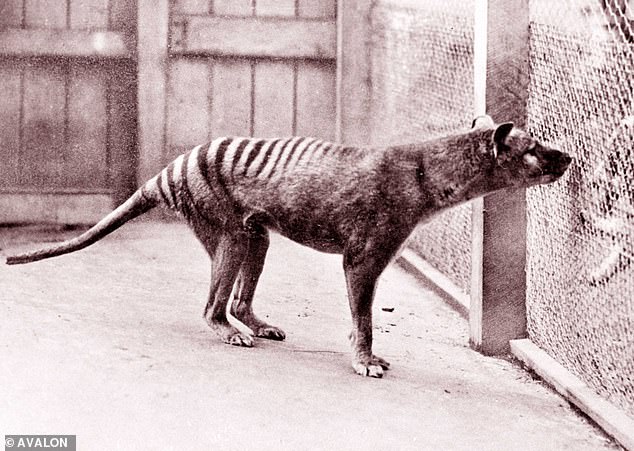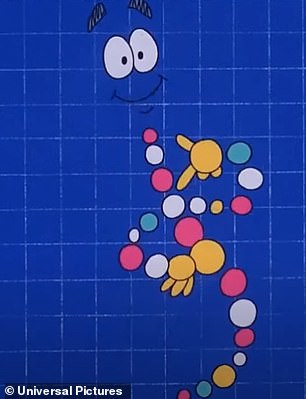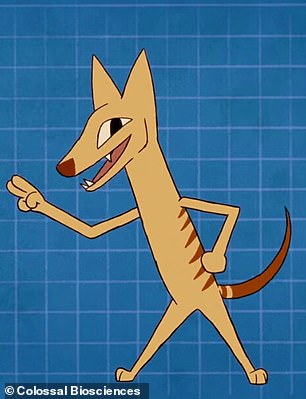Sound familiar? Company attempting to bring back the woolly mammoth and Tasmanian tiger from extinction release video with cartoon mascot
A US-based biotechnology company trying to make the Tasmanian tiger ‘extinct’ using DNA from another marsupial has released cartoon videos in a bid to win over skeptics.
The Colossal Foundation said in early October that it had reconstructed the thylacine genome with 99.9 percent accuracy – a claimed world first for an extinct species.
The new video shows a cartoon version of the animal on a blue-checked background that looks strikingly similar to the ‘MrDNA’ mascot that appeared in the 1993 blockbuster Jurassic Park.
The company, which announced the project in 2022, wants to eventually return the carnivorous Australian marsupial to the wild.
Colossal has released four videos, narrated by an animated thylacine, aiming to explain the ecological significance of the species and the science involved.
“It sounds like a movie we’ve all seen, but it’s not,” one video says, referring to the Steven Spielberg-directed classic.
‘Well, the science is more or less the same in theory, but everything else is definitely not.
“Our return could prove that we can right the wrongs of the past and restore our natural heritage, which in turn will create a more sustainable future for the island.”
The last known thylacine died in captivity in a Hobart zoo in 1936, with colonial hunting, disease and habitat change blamed for its demise.
Colossal Biosciences – which has received financial backing from stars including Paris Hilton and Chris Hemsworth – bills itself as ‘the world’s first de-extinction company’ (Colossal CEO Ben Lamm is pictured)

The last known thylacine died in captivity at a Hobart zoo in 1936 (photo)
In a collaboration with the University of Melbourne, Colossal aims to create a ‘near-perfect’ genetic match to the thylacine using DNA from its closest living relative, the fat-tailed dunnart.
The plan is for thylacine young to be born by thin surrogate mothers and then develop in an artificial pouch.
“(The genome reconstruction) represents significant progress toward achieving the goal of thylacine ‘extinction’,” said Ben Lamm, CEO of Colossal.
“The company is excited about what this scientific milestone can mean for Tasmania and the world.”
Some scientists poured cold water on Colossal’s genome claim, saying they wanted to see peer-reviewed data before they got too excited.


The new video features a cartoon version of a thylacine on a blue-checkered background that looks strikingly similar to the ‘MrDNA’ mascot that appeared in the 1993 film Jurassic Park.
Mayor of a council in the island state’s south, Michelle Dracoulis, chairs Colossal’s Tasmanian Thylacine Advisory Committee.
“We created these videos to help dispel some of the myths and skepticism, and to answer questions that many people have about the thylacine and the de-extinction project,” she said.
“I think one of the key messages from the series is explaining why this project is important to Tasmania.
‘In part, it’s about restoring our top predator to the ecosystem and stopping the inevitable trophic degradation that occurs as a result of its absence.’
Colossal says it wants to create a thylacine within ten years that is a near-perfect match for its original ancestor.
